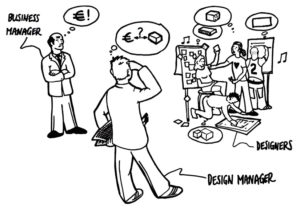Typically the value engineering (VA/VE) practices take already designed, validated and productionised components and apply the VA/VE methodologies to increase the value of the product either by reducing cost (weight) or increasing functionality.
What if we, the designers or design engineers, could do the value enhancement of the product at virtual concept design stage itself?
To make the things clearer, let’s get into the numbers with a simple example:
Assume,
Selling volume of a popular car = 60K unit per year.
Engine front mounting arm of the car is a casting component, weight= 1.2kg,
Material cost per unit (A) = 1.2 kg x 1.5 USD = USD 1.8
Design and virtual validation of the mounting arm (B) = 300 Man-Hours x USD 20 = USD 6000
Physical validation of the arm (C) = 200 Man-hours x USD 20 = USD 4000
Tooling cost of the arm (D) = USD 3500
So, total design and development cost of the engine mounting arm (E) = B + C+ D = USD 13500
Image Source: Wiki
Now, let’s see the cost benefit analysis comparison for upfront value engineering at initial product development stage vs. separate value engineering (VA/VE) drive after 1 year of production:
| Upfront Value Engineering | Separate VA/VE Drive after 1 year | |
| Design & Development Cost | 13500 | 13500 |
| Additional Design & Development Cost | 0 | 13500 |
| Opportunity cost of Material saving for 1 year of production* | 0 | 21600 |
| Total Cost (USD) | 13,500 | 48,600 |
* Assumptions – 20% material saving could be achieved through VA/VE. So, total material cost saving through 1 year of production = 20% x 1.8 x 60000 = USD 21600
Time benefit analysis similar to the above cost benefit analysis can show the benefits of upfront value engineering in terms of time as well. Now, the next question arises as how to do upfront Value Analysis / Value Engineering ? The answer is using the design optimization tools and software right at the concept development stage, many such tools like SolidThinking Inspire are available out there.
Hi, I am Shibashis, a blogger by passion and an engineer by profession. I have written most of the articles for mechGuru.com. For more than a decades i am closely associated with the engineering design/manufacturing simulation technologies. I am a self taught code hobbyist, presently in love with Python (Open CV / ML / Data Science /AWS -3000+ lines, 400+ hrs. )

